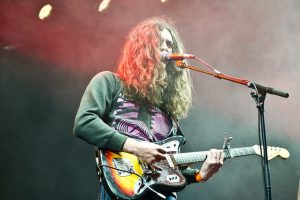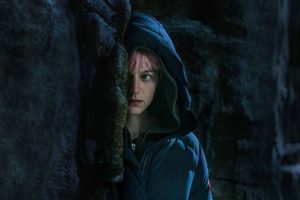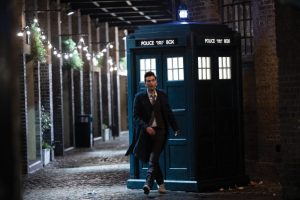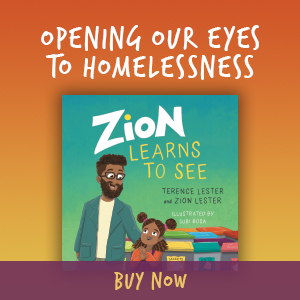For most of the 20th century, movies and television have cast gay and lesbian characters as deviant bad guys. But as attitudes in the larger public change, so has Hollywood's portrayal.
It's been just about a year since Ellen DeGeneres and the character she plays on her ABC sitcom came out of the closet. Time enough for all the media hype around this "sweeps week" event to dissipate, and for those of us curled up on our couches to wonder if the much ballyhooed episode was one giant leap for gays and lesbians everywhere-or just one small step for ABC/Disney's ratings.
On the plus side, gay couples can now adopt children in New Jersey, the U.S. bishops voted in November to recommend that parents everywhere should love and nurture their homosexual children, and Bill Clinton recently attended a formal dinner for gays and lesbians. But it would be hard to hang all the credit or blame on DeGeneres. After all, by the time she came out of the closeton PrimeTime Live, Oprah, and the cover of Time–there were already close to two dozen recurring gay characters on TV, including, among others, lesbian and/or gay couples on Roseanne, Mad About You, NYPD Blue, and Friends. And don't forget the assorted homosexuals on Spin City, Frasier, and The Simpsons.
Of course, it wasn't always this way. Not so very long ago gays and lesbians were invisible on television, and when they showed up in films they tended to be cast as either guiltridden deviants or pathological sadists. In Suddenly Last Summer (1959), Montgomery Clift played a tortured lover of boys who is brutally murdered for his guilty passion, while in Advise and Consent (1962) and The Children's Hour (1962), rumors of homosexual love drove both Don Murray's and Shirley McLaine's characters to suicide.
Meanwhile, in dozens of Roman epics and World War II dramas, the most sadistic of Caligulas or Gestapo agents were inevitably portrayed as full-lipped and tubercular dandies with an appetite for "the love that dare not speak its name." To be really mean in Hollywood, it seems, it helped to be homosexual.
Even today these tired stereotypes continue to be trotted out with some regularity. Most recently Albert Finney gave us a reprise of the homosexual as a desperately lonely deviant in A Man of No Importance (1994), and he is joined by the killers in Looking for Mr. Goodbar (1977), Cruising (1980), Basic Instinct (1992), and The Silence of the Lambs (1991), as well as by the foppish evil Prince Edward in Mel Gibson's Braveheart (1994). This is evidence enough that sadistic gays continue to play well in tinsel town. As Rob Epstein's 1995 documentary The Celluloid Closet and David Johnson's The Lavender Lens: 100 Years of Celluloid Queens (1996) both argue, when they haven't been invisible, homosexuals have usually been treated either as pathetic or despicable.
Yet in the past several years significant strides have been made, both in Hollywood and on TV. And while cruel and silly stereotypes still endure, a rich variety of gay and lesbian characters have begun to surface on both the small and big screens, at first in small cameos and later in major, often complex, and interesting parts.
Love in a time of plague One fresh set of gay roles that began to appear in the mid-'80s concerned young men and women coming to grips with AIDS. The screen showed ordinary, compassionate, and frightened people trying to make sense of their experience of love, secrecy, and death in the midst of the growing plague.
As many of us began to hear about or attend the all-too-early funerals of friends, relatives, and–occasionally–clergy who had died of AIDS, the stories of these personal losses began to surface in films and TV movies like An Early Frost (1985), Our Sons (1991), and The Gloaming (1997). Usually they starred mothers played by the likes of Gena Rowlands, Julie Andrews, and Glenn Close–and handsome, decent, and dying sons like Aidan Quinn and Hugh Grant (whose character behaved much better as a homosexual than his character did as a straight man in Four Weddings and a Funeral).
Often enough these stories were about reconciliation, about forgiving parents and friends who couldn't abide the central character's orientation, about letting go of old hurts and trying to accept one another for who we really are. They are also tales of courage and fidelity, of lovers accompanying each other through the long processes of illness and death, and about coming to grips with grief and abandonment. Philadelphia (1993) and Love! Valor! Compassion! (1997) are two of my favorite movies that deal with some of these issues.
Out of the birdcage
But not all the roles have been for the Aidan Quinn and Tom Hanks types. Some fresh opportunities are to be found in madcap comedies that have turned old homosexual stereotypes inside out by going way, way over the top.
In movies such as The Adventures of Priscilla, Queen of the Desert (1994), To Wong Foo, Thanks for Everything! Julie Newmar (1995), and The Birdcage (Mike Nichols' and Elaine May's 1996 remake of La Cage aux Folles), actors like Nathan Lane and Robin Williams, as well as Patrick Swayze and Wesley Snipes, got to play outlandishly funny and deeply sympathetic characters in whom there was clearly no perverse or unnatural moral disorder. In these movies the joke was not on the gays but the straights, or at least those straights whose uptight homophobia kept them from recognizing the humanity of men who wear-and look terrific in-dresses.
Perfectly gay?
Most recently there's been something of a sure in what might be called "drop-dead perfect" gay characters. These are men and women who aren't merely just as nice, attractive, and moral as their heterosexual neighbors, but who are indeed a whole lot better.
I first noticed this trend in Four Weddings and a Funeral (1994) where the gay couple in the story proves to be eminently more stable, mature, and poetic than any of the gaggle of rather silly straights running from bedroom to bedroom in search of true love. So too are the lesbian couples in Fried Green Tomatoes (1991) and Antonia's Line (1995), who are just smarter and nicer than the folks around them. Indeed, the "straight" gene pool in both of these films seems terribly shallow and polluted.
Certainly the clearest examples of this new phenomenon are Tom Selleck and Kevin Kline in In and Out (1997) and Rupert Everett as Julia Roberts' editor and friend in My Best Friend's Wedding (1997). Cary Grant and Fred Astaire together never have more charm and grace than these guys, nor Henry Fonda and Gregory Peck more integrity.
And just what are we to make of all this increased coverage of gays and lesbians on television and at the movies? What are we to think about the presence of dozens of gay and lesbian characters on cable and the networks, about the mainstreaming of homosexual roles in movies playing at the local cineplex rather than the art theater downtown?
Does the increased presence of gays and lesbians in our visual mass entertainment translate into progress and increased understanding, or are they simply being added as local color?
On the downside I sometimes wonder if any group, particularly one identified by its sexuality, is likely to get either fair play or intelligent treatment from a medium designed for visual stereotyping.
After all, look at the way primetime TV portrays heterosexuals on shows like Married with Children, Spin City, Men Behaving Badly, Cybil, Seinfeld, and Frasier. Amidst this assortment of silly, shallow, and pathetically oversexed cartoon characters, it would certainly be tough to find either an intelligent presentation of the meaning and challenges of adult sexuality–or role models for adolescents seeking guidance or inspiration in healthy relationship matters. (OK, Mad About You does a nice, funny job, but it's clearly the exception that proves the rule.)
And in a medium that loves to fill its afternoon programming with carnival sideshows populated by pathetic folks willing to show their sexual dysfunction to the gaping audience, can we really expect serious reflection or conversation about the morality or experience of homosexuality?
The power of TV
And yet, in another sense, TV and film are probably the best place for gays and lesbians–and other groups affected by bias and discriminationto be. Although these visual mediums usually lack any subtlety or capacity to engage us in serious reflection, it can often slip its messages past our defenses and get us used to seeing and watching people we might not normally meet or attend to. TV and movies can bring gays and lesbians into the living rooms of our imagination and get them walking around inside our heads-debunking other images created by ignorance and bias.
It's true that homophobia and gay-bashing won't be stopped by putting more gays on TV, or even by giving them good roles and interesting characters to play, but it's also true that Bill Cosby's friendly, intelligent, and witty presence in hundreds of millions of American households over the past 30 years has done more than a little good for the cause of racial harmony in America.
It's also true that the growing presence of gays and lesbians on TV and in films offers role modelsmostly silly, but sometimes helpful–for young men and women who are gay or lesbian and who need to know they have a place among us. So the growth of roles, particularly sympathetic ones, for homosexual characters over the past dozen years or so has for the most part been good news for gays and straights alike. And even though Ellen's coming out of the closet last April was hardly the start, or even the height of this progress, this overhyped media event may turn out to have been important precisely because the character DeGeneres plays is so ordinary, so commonplace.
Neither tortured nor despicable, Ellen is also not particularly brave, gracious–or in my opinion–riotously funny. Instead, she is just an ordinarily neurotic and humorous sitcom character whose personality isn't more pathetic than Drew Carey's or Cybil's. And for that very reason she may indeed represent some small but real step in our society's gradual recognition of the humanity of gays and lesbians.
Even more than the brave men and women struggling with AIDS, or the suave, debonair folks in some recent films, Ellen represents homosexuals as being just as ordinary as the rest of us–revealing them as just as normal, decent, neurotic, foibled, and funny as straight people. She lets us know not only that gays and lesbians aren't demons and perverts, but also that they don't need to be Jackie Robinsons or Madame Curies.
Gays and lesbians are simply the folks sitting next to us in the bleachers or doctor's waiting room. And that's not a mean achievement.
This article appeared in the April 1998 issue of U.S. Catholic (Vol. 63, No. 4, pages 45-48).














Add comment